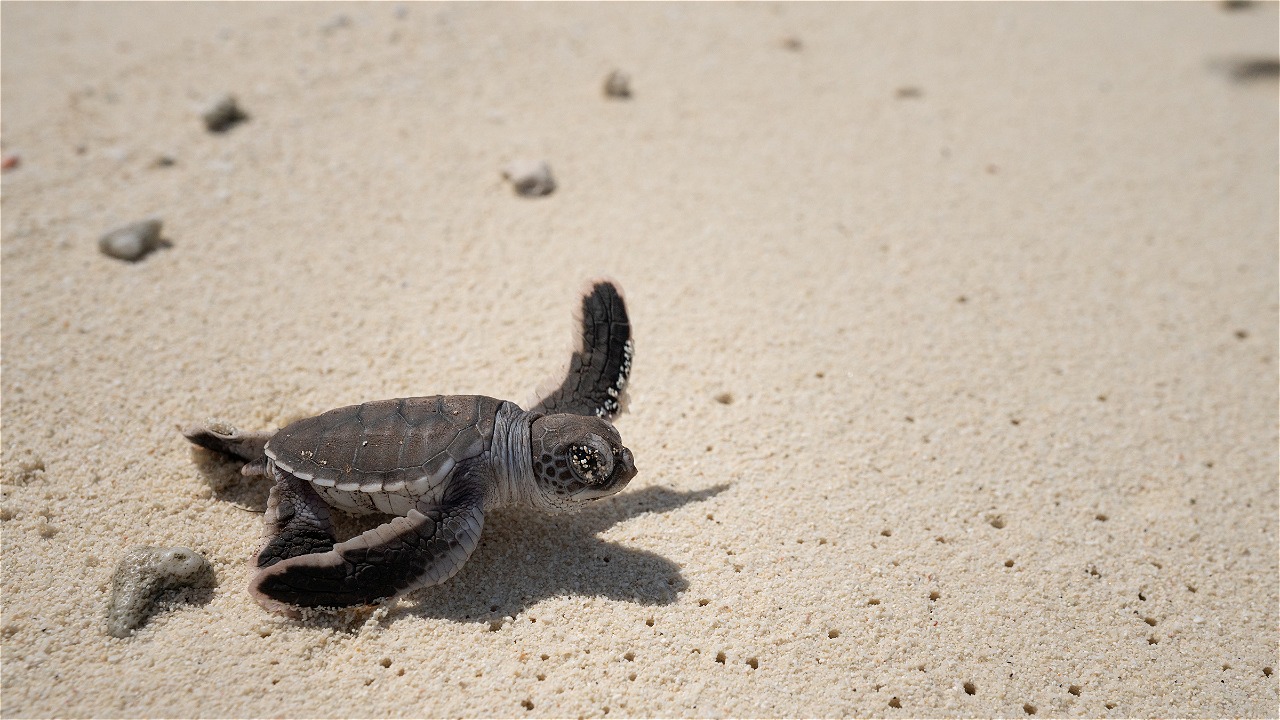FAILED SMUGGLING ATTEMPT, 40 GREEN TURTLES RELEASED ON KUTA BEACH
By: Dwi Suprapti (Marine Species Conservation Coordinator, WWF Indonesia)
Ditpolair Bali Police foiled another attempt to smuggle 45 Green Turtles (Chelonia mydas) in Tejakula waters, Singaraja, last Thursday (17/9). Previously, Ditpolair Bali had also foiled the smuggling of 37 Green Turtles in Ketewel Waters, Gianyar, in early July 2015.
A total of 41 of the 45 turtles that were secured in the early hours of the morning were immediately taken to Kuta beach to be immediately released back into the sea. Unfortunately, one of them died due to an open wound on the neck.
In addition to being attended by the Bali Police Director, the turtle release was also witnessed by the Bali Police Chief, the ranks of the Police, as well as a number of agencies such as the Bali Natural Resources Conservation Agency (BKSDA), Denpasar Coastal and Marine Resources Management Center (BPSPL), Serangan Turtle Education and Conservation Center (TCEC), Bali Sea Turtle Society (BSTS), WWF-Indonesia and tourists on Kuta beach.
Shortly after releasing the Bali Police Chief, Inspector General Sugeng Priyanto, told the chronology of events. "The Polair patrol team received information on Green Turtle smuggling which led to the tracking of a nameless and unmanned ship floating in the waters of Tejakula beach. The patrol team found the boat carrying 45 endangered Green Turtles. The perpetrators are 3 people who are suspected of coming from Madura, which is still being pursued.", he explained.
Before the release, WWF-Indonesia had conducted identification and health checks on the turtles. The identification results showed that 39 of the released Green Turtles were female and only one was male. The average length of the turtles' carapace arch is 61 cm with the longest size being 96.2 cm and the smallest being 42 cm.
In general, the results of health checks and analysis conducted by WWF-Indonesia show that the turtles are in mild to severe dehydration. Towards noon, signs of dehydration became more apparent with the appearance of clinical symptoms of cloacal prolapse in 4 female turtles. Meanwhile, another female had a carapace abrasion reaching ¾ of the carapace area. One turtle also had multifocal fibropapilomatosis tumors on the left and right eyes, neck, and left front flipper. In addition, barnacles were found on the carapace of two other turtles, which were deactivated to prevent them from parasitizing the turtles. After completing a thorough examination, WWF-Indonesia concluded that all 40 turtles were healthy enough to be released. Some of the smaller turtles were relatively aggressive compared to the larger turtles which tended to be slower moving.
WWF-Indonesia appreciates the efforts made by Ditpolair Bali in disrupting the Green Turtle smuggling in Bali and releasing the turtles as soon as possible after the security. Happy back to the ocean, turtles!
Release tipspturtlesdadults
When releasing a sea turtle, it is important to make sure that the turtle is fit to be released. The person releasing the turtle should ensure that the handling technique is appropriate and does not cause injury to the turtle or the person releasing it.
Based on WWF-Indonesia's observations in several adult turtle release activities, it is often seen that turtles are lifted by both front flippers. This can create an opportunity for injury or fracture. In addition, there are also some who try to lift the turtle's body and let the turtle's front flippers flap like a bird, which may injure the person handling the turtle.
When handling large adult turtles, try to keep the number of people lifting the turtle to a reasonable level (at least 3 people):
- One person on the left position with one hand holding the elbow of the front flipper to prevent it from moving and the other hand lifting the edge of the turtle's body;
- Another person does the same on the right side; and
- One more person helps lift the turtle from the back side.





